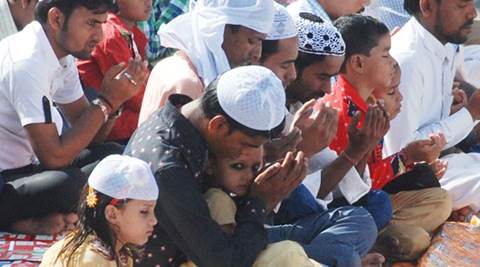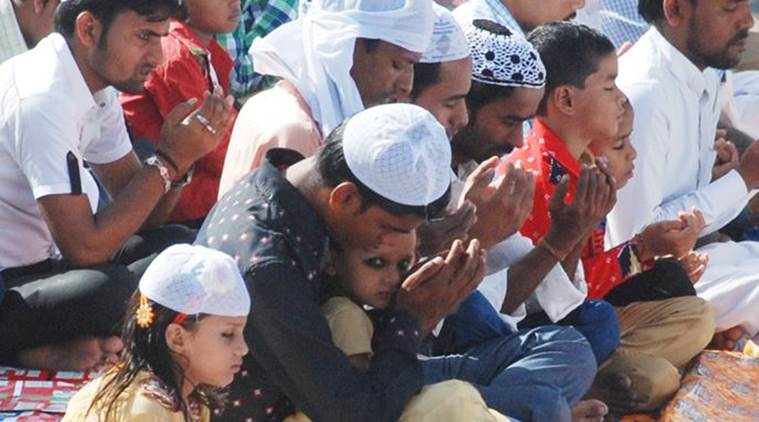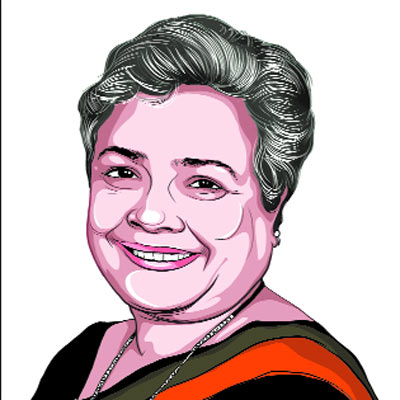Opinion What the pirs say
Muslim saints of Uttarakhand speak of the ties that bind us.

 Unlike the usually benign and awesomely aloof gods of the mainstream Hindu pantheon, the writ of the local gods of Uttarakhand runs right up to Nepal.
Unlike the usually benign and awesomely aloof gods of the mainstream Hindu pantheon, the writ of the local gods of Uttarakhand runs right up to Nepal.A popular ritual, jagar, is performed all over Uttarakhand to placate angry local deities offended by some acts of ours. It is performed after dusk to the accompaniment of slow, somewhat eerie music. The medium, dhami or jagariya, begins to shake and goes into a trance. Gods and local demigods then begin to manifest themselves one after another in his body. Finally, the Angry One spells out the exact nature of the crime and points out the culprits. At this point, the music grows gentle and wheedling as the priest asks the Angry One for forgiveness. Promises are made and fulfilled. All is forgiven. Life goes on.
Unlike the usually benign and awesomely aloof gods of the mainstream Hindu pantheon, the writ of the local gods of Uttarakhand runs right up to Nepal. One sees their names on vehicles from Uttarakhand negotiating murderous traffic on highways: Jai Golu Devta ki! Bhramari Mai ki jai! Of them, Golu was a prince exiled by scheming stepmothers. He came back and became an ideal ruler. Others like Kalbisht and the Pirs Syeda and Maimanda were bravehearts. The medieval Nath saints led by Guru Gorakhnath, who visited Uttarakhand and empowered the marginalised tribes by destroying caste taboos, lent them extra muscle. All of them must “appear” in the body of the dhami from a Dalit community, whom the Brahmin priest will anoint reverentially.
[related-post]
According to lore, some Muslim soldiers tired of bloodshed, came to the Himalayas after the (1398) battle of Piran-e-Kaliyar, fought near Meerut between one Raja Dham Dev and the Turkish armies of Timur. Of them, one Syed Kalu Pir was advised by Hazrat Nizamuddin Auliya to go towards the Himalayas to recover. He camped near Haldwani with two of his Pathan murshids, who built him a dargah after his demise in Basani village. He is worshipped by locals and passers-by even now, and offered jaggery, eggs and bidis.
Maimanda Pir was another, described in jagar songs as the brave son of a Turk mother. He had visited Kashi, where he became a Gorakhpanthi fakir, and after settling in Uttarakhand, formed a strong bond with the astrologer-priests of Joshimath. As he “appears”, the priests greet him with the words: “Om namo guru ko ades (Om, I bow to thee at the behest of the guru)”. The song of praise then goes on to laud his bravery.
Some pirs mutate into and out of some local god — for instance, Kala Vir or Kaila Pir of the Thati Patti villages in Tehri Garhwal. A temple was built in his name in the Thati Kathur village of Buda Kedar (the old site of Kedarnath), where he is known both as Kaila Pir (representing the Muslim faith) and an avatar of Kapil Bhairav, to justify the temple perhaps (representing the Shaivites). Villagers will refer to him simply as “Veer Baba”. He is said to have appeared as a naked sadhu before a British forest officer and his wife camping near his chauk. He rudely ordered them to leave. Even now, come the early winter month of Mangsir, and two special celebrations are held on Diwali and the first day of the new moon for Veer Baba.
In the Lobhagarh area of Garhwal, Kaila Pir is also the protector of harvests, and at his than (seat) in Kaila Pir Ka Chauka, near Chandpur Garh village, a mela is held each year in his memory. His priests are Brahmins, with whom he had lifelong ties, and as the Brave One, he is the family god (kuldevta) of the warrior caste of Rajputs (Kaintura) of the area, and a protector of all. He is said to control forest fires and the villagers firmly believe the pir will call out to his devotees to warn them of any impending trouble.
Our wise president spoke movingly of the troubled times and the secret threads that have held India together as a country through the centuries. The pirs of Uttarakhand are some of those invisible but indestructible threads. Who could deny them love or glory?
The writer is former chairperson, Prasar Bharati.





